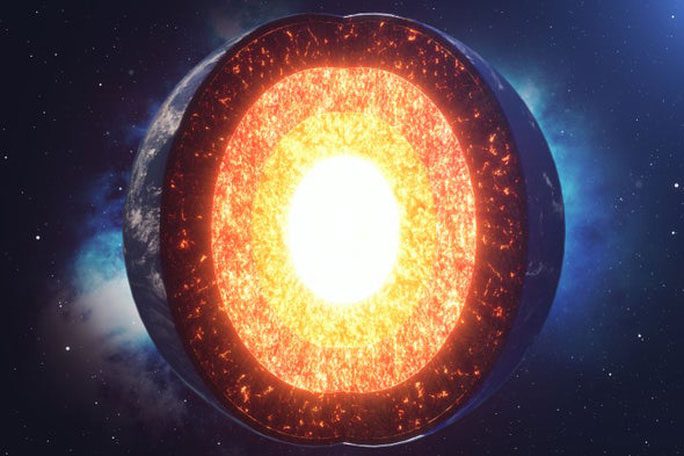Below the Banda Sea of Indonesia, the Earth’s core is developing extremely rapidly, while beneath Brazil, it is growing very slowly.
A study led by geophysicist Daniel Frost from the University of California, Berkeley, has discovered an anomaly in how seismic waves travel through the Earth: they seem to move 3% faster when traveling in a straight line (from pole to pole) compared to the time it takes to travel from east to west.

Internal structure of the Earth – (Photo: SCIENTIFIC AMERICAN).
The researchers established new models of the Earth’s structure based on seismic data and concluded that the solid core of the planet is growing faster on one side, specifically beneath the Banda Sea of Indonesia, while the opposite side (beneath Brazil) is developing very slowly. This results in the Earth’s core no longer being a spherical mass at the center as we might imagine, but rather becoming distorted and tending to lean towards one side.
“There was a time when our planet did not have a solid core. The innermost part of the Earth contained a mass of molten material billions of years ago, after which the liquid iron began to cool and solidify, transforming the center of the Earth into a gigantic cluster of crystallized iron, which is still growing,” the Science Alert cited the research.
This distorted sphere known as the “Earth’s core” is also growing more slowly beneath the poles, leading to a gradually flatter shape. According to Dr. Frost, the growth rate at the poles is up to 40% lower than the average speed, while the growth rate at the equator is up to 130% higher. The growth rate in the equatorial regions on the eastern and western sides also differs significantly, with some points exceeding the global average by up to 160%.
The study recently published in Nature Geoscience also confirms that this uneven growth has been occurring since the core of the planet began to solidify, approximately half a billion to 1.5 billion years ago.





















































